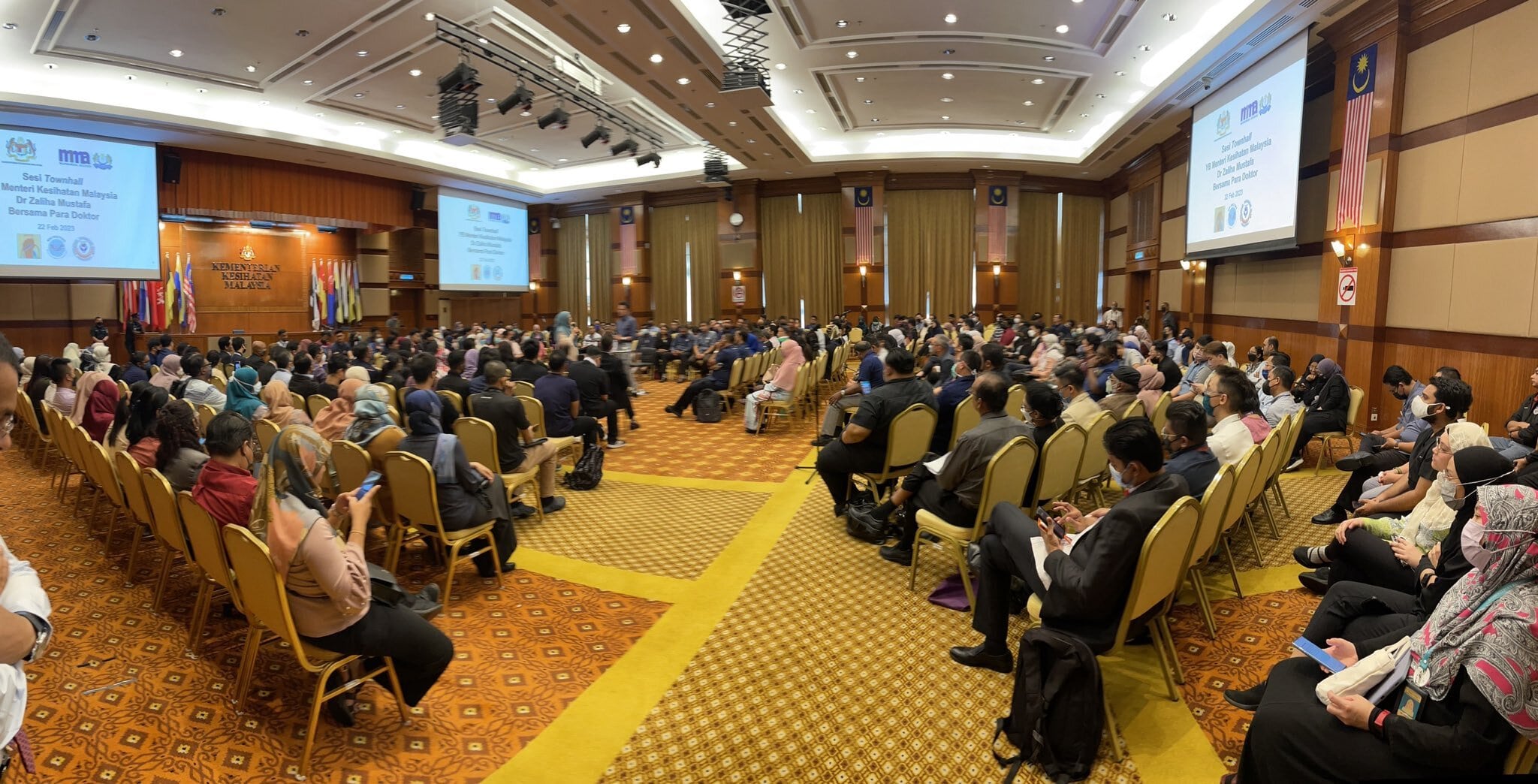KUALA LUMPUR, June 26 – The Ministry of Health (MOH) today defended the quantum of medical officers’ on-call allowances, despite doctors’ demands for a raise as rates have stagnated for a decade.
The MOH disputed hourly calculations of medical officers’ allowances for active on-calls on weekends and public holidays; government doctors previously said they’re paid only RM9 per hour for on-calls, lower than certain retail staff (RM10 per hour) and cleaners (RM20 per hour).
“Calculating the ETAP rate by dividing RM220 (the ETAP rate for active on-call on public holidays and weekends for medical officers) from 24 hours (RM9.16 per hour) is not accurate because the ETAP is paid based on 15 hours per day that takes into account the period of on-call duties after regular working hours,” the MOH said in a statement.
ETAP refers to the on-call allowance.
“Payment of ETAP is based on the period of time that the officer is instructed to perform on-calls (minimum four hours’ work), and does not include the officer’s regular working hours.”
The MOH gave an example of a UD52 medical specialist, Dr Ali, who receives an RM17,299 monthly wage (base salary plus fixed allowances), which translates to RM576.63 per day.
He is eligible for an on-call allowance of RM250 for active on-call duty, based on the extra hours he works after regular working hours.
“In line with that, the amount of wages received by Dr Ali on the day he does on-call duty is RM576.63 plus ETAP (RM250), which totals RM826.63 per day,” the MOH said.
“Based on the above explanation, emoluments and other allowances for civil servants are given based on the structure and principle of salaries in the public service, based on the principles of rate for the job and parity, besides taking into account current fiscal capacity.”
At a town hall meeting with Health Minister Dr Zaliha Mustafa last February, the Malaysian Medical Association (MMA) proposed a 178 per cent increase in doctors’ weekend on-call claims to RM25 per hour from the current hourly RM9 rate.
Government doctors noted that their counterparts in Singapore are paid RM60 per hour for on-calls. A specialist doctor working at an MOH hospital in Sabah also previously pointed out that the length of on-call duty on a weekend often stretches to beyond 24 hours.
Last March, Bandar Kuching MP Dr Kelvin Yii, who is the health minister’s special advisor, supported raising medical officers’ on-call allowances due to their present workload and risks, describing this as “low-lying fruit” for the government to achieve.
“I think MOH is on the same page in terms of raising, but we are now engaging JPA (Public Service Department) and of course the Ministry of Finance in order to address this,” Dr Yii had told CodeBlue then.
The MOH’s statement today, however, indicates that the ministry itself does not believe in the need to raise doctors’ on-call allowances, despite acknowledging that on-call rates were last increased more than a decade ago in 2012, after previous raises in 2005 and 2001 since the introduction of the allowance in 1994.
The MOH also said that on-call allowances are paid to medical officers who perform on-call work in 791 public health clinics that currently operate after office hours.
About 70 to 75 per cent of the MOH’s operating expenditure is spent on emoluments – salaries and allowances for permanent and contract staff. Last year, of the RM21.61 billion emoluments for the MOH, RM18.81 billion and RM2.8 billion were spent on permanent and contract officers respectively.
“Besides that, the MOH also pays other allowances based on claims, such as ETAP for medical officers totalling RM165 million annually.”
The MOH stressed that the principle of salaries and fixed allowances for civil servants, including medical officers, was based on monthly and not hourly rates.
“The same rule is implemented in the private sector, whereby if the officer does not work for a full month, payment of salaries and allowances is prorated, based on the number of days the officer works in the relevant month.”
The MOH pointed out that besides a salary, medical officers receive multiple other allowances, such as the Critical Service Incentive Payment (BIPK), the Specialist Incentive Payment, the locum allowance, the Elective Surgery Allowance, and the on-call allowance.








